By Renu Bala and Shivam Malvi
Introduction
In the domain of Intellectual Property law, the strain between innovation and imitation every so often boils down to the question of novelty and originality. The case of Jayson Industries and Anr. v. Crown Craft (India) Pvt. Ltd.[1], symbolizes this, where day to day household designs became the arena for piracy claims. Decided by Delhi High Court in 2023, it underlines how prior art can shred claims of novelty, demarcating valuable insights for registered design proprietors and businesses alike.
What is Prior Art?
Prior Art refers to any evidence that an invention or design was already known before the filing date of a design or patent application. Section 19[2] of the Design Act, 2000 (herein referred as the Act), includes designs published anywhere in the globe prior to the registration date such as through public sale, use, or documentation. This concept renders safeguard against granting monopolies designs that are not truly novel but just a mere mechanical change of an idea, ensuring that only innovative creations receive protection. Courts evaluate prior art on the ocular appeal rather than functionality. Essentially, prior art sets benchmark for assessing novelty, preventing the registration of mere trade variants.
Essence of Design Disputes- Novelty and Originality
The expression, “new or original” means that it had been invented for the first time or it has not been reproduced by anyone.”[3] Novelty in design law has been defined under Section 4 of the Act[4]– it must be new and not previously published or used publicly before date of application where Originality necessitates the design to originate from the author’s intellect, not just a mere copy or imitation of existing works. This twofold threshold stimulates genuine creativity while curbing unwarranted monopolies on commonplace designs.
Battle over Prior Art v. Novelty and Originality- Jayson Industries v. Crown Craft (India) Pvt. Ltd.[5]
In a noteworthy ruling on design and novelty, the Delhi High Court in its judgement dated July 03, 2023, examined the allegations of design piracy. The Plaintiff, holding Design Registrations 326707, 326883 & 326882 for a bucket, mug and tub, claimed these items featured unique shapes, configuration and surface patterns that distinguished them from others. The plaintiff accused the defendant of blatant imitation of their designs alleging piracy and Plaintiffs emphasized that their design highlighted unique ribbed bodies and flange- like rim extensions which they argued was an alleged imitation by the defendant; the comparison of the same is:
| Plaintiff’s Design | Plaintiff’s Registration No. | Date of Registration of Plaintiff’s Design | Status- IP India | Defendant’s Design |
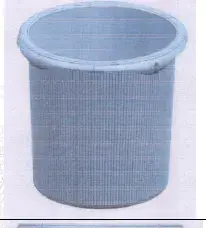 |
326707-001 | February 01, 2020 | Registered | 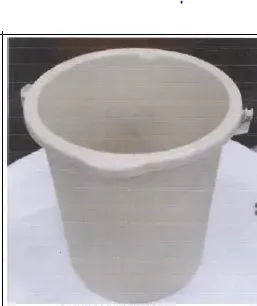 |
 |
326883-001 | February 06, 2020 | Registered | 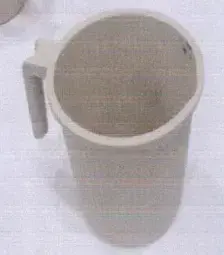 |
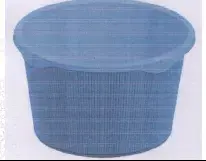 |
326882-001 | February 06, 2020 | Registered |  |
The Defendants argued and submitted evidence of prior art including registered designs brochures, and online listings, claiming the plaintiff’s features were not novel or original and the same is reproduced below:
| Title | Date of registration of Prior Art | Images of Prior Art |
|
(i) Bathroom tub as uploaded by Sara China Bona Mould. |
June 18, 2019 |
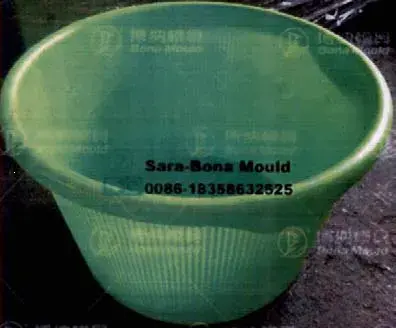 |
|
(ii) Mug, as uploaded by Sara China Bona Mould. |
June 18, 2019 |
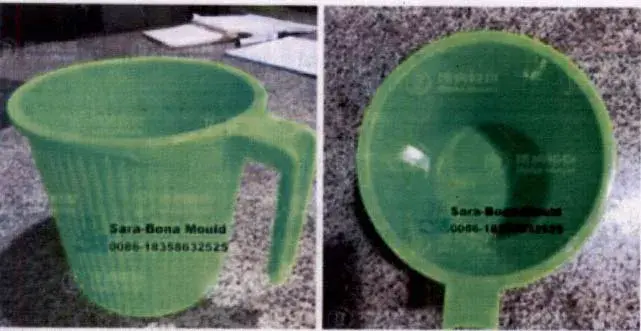 |
|
(iii) Tub No. BN2103169 invoiced by Bona Mould to Crown Craft, Jaipur. |
June 26, 2019 |
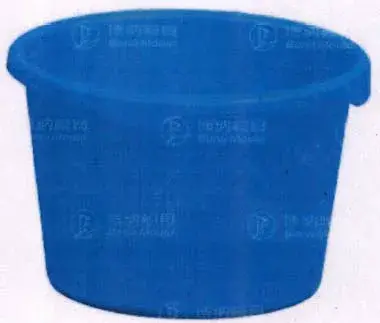 |
|
(iv) Mug No. BN2103170 invoiced by Bona Mould to Crown Craft, Jaipur. |
June 26, 2019 |
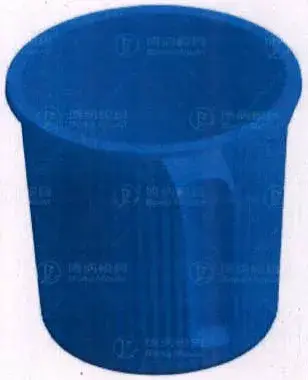 |
|
(v) SeMius Durable Practical Solid Geometric Shape Storage Garbage Household Trash Can available on amazon.in. |
March 14, 2019 |
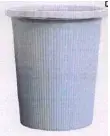 |
Thus, the key issues involved were:
- Whether the designs applied by the defendant to its bucket, tub and mug constitute Piracy within the meaning of Section 22(1)[6 of the Designs Act, 2000?
Plaintiffs had registered “Ribbed” designs in February 2020 for buckets, mugs and tubs with vertical ribs and flange-like rims. Defendant acquainted with similar items in 2021, sparking a piracy suit under Section 22(1) of the Act; the case moved from district court to Delhi High Court after validity challenges.
Plaintiffs claimed defendant’s products were fraudulent imitation of their key visual features, deceiving buyers and warranting a Section 22(1) injunction, citing prior registration and eye-alluring novelty. Defendant argued the designs lacked novelty and originality, resembling prior art like Nayasa’s buckets (attached above), as mere functional variants, without valid registration under Section 4 and 19, no piracy existed.
The court held that the defendant’s designs for the bucket, tub and mug did not constitute piracy under the Section 22(1) of the Act due to prime facie invalidity of the plaintiff’s registration lacking novelty and originality compared to prior art, the court applied the ‘ocular/ eye to eye’ test and found the defendant’s products to be mere trade variants of existing designs, not rising to “fraudulent or obvious imitation”
- Whether the Plaintiff’s registered designs are invalid on ground of lacking Novelty or Originality and are invalid due to prior publication under Section 4(a)[7] r/w Section 19(1) (c)[8] of the Act?
Plaintiffs asserted that their designs were novel and original, derived from intellectual effort with distinctive eye-appealing features not previously published, contending that slight variations from prior art did not undermine validity under Section 4 and 19 of the Act. Defendant argued the designs failed novelty and originality tests, being mere trade variants substantially similar to prior art as reproduced in the above table and thus, invalid under Section 4(a)[9] r/w Section 19(1) (c)[9] of the Act lacking significant ocular appeal.
The court held the plaintiff’s designs invalid under Section 4(a) r/w Section 19(1) (c) of the Act for lacking novelty and originality as they were held to be mere trade variants of prior art without substantial differences.
- Whether the defendant is precluded by Estoppel from contesting the novelty and originality of plaintiff’s registered design in view of defendant’s earlier application?
Plaintiffs contented that the defendant’s withdrawal of its 2021 design applications estopped it from challenging the novelty and originality of the suit designs, implying an admission of similarity and validity that barred such contests under estoppel principles. Defendant rebutted that design rights are in rem and thus immune to estoppel, asserting withdrawal did not prevent validity challenges, with no statutory prohibition and support from precedents like Philips Lighting Holding B.V v. Jai Prakash Agarwal & Anr.[10].The court found the plaintiff’s designs lacked novelty and originality as the vertical ribs were identical to prior art and rim ribs were identical to prior art and rim flanges represented mere trade variants under the Philips Doctrine, offering no substantial distinction. On estoppel, no bar applied since the defendant withdrew their registration application upon recognizing the designs’ lack of novelty with no final registration obtained.
- Whether the Plaintiffs are entitled to Interlocutory injunction against the defendants under the view of Section 22(3)[11] of the Designs Act?
The Plaintiff had obtained an ex-parte interlocutory injunction from the Commercial Court on June 08, 2022, restraining the defendant from selling similar items and sought to maintain it under Section 22(3) of the Act, arguing prime facie validity, balance of convenience and irreparable harm from infringement. Defendants filed to vacate the injunction, challenging the designs’ validity on grounds of lacking novelty and originality and prior publication, asserting credible defense under Section 22(3) of the Act that precluded interlocutory relief.
The court stated that under Section 22(3) of the Act, every ground for cancellation under Section 19 is available as defense and when a credible challenge to validity is raised, interlocutory injunction cannot be granted. Thus, court stated it need not examine detailed precedents when visual appreciation of designs vis-à-vis prior art is conclusive.
Hence, by vacating the injunction the court prioritized the importance of robust prior art evaluation in design disputes, reinforcing that registration do not automatically confer validity.
Anoushka Keswani, Legal Intern at S.S.Rana & Co. has assisted in the research of this article.
[1] CS (COMM) 580/2022.
[2] The Designs Act, No. 16 of 2000, § 19- “Cancellation of registration.— (1)Any person interested may present a petition for the cancellation of the registration of a design at any time after the registration of the design, to the Controller on any of the following grounds, namely:—(a)that the design has been previously registered in India; or(b)that it has been published in India or in any other country prior to the date of registration; or(c)that the design is not a new or original design; or(d)that the design is not registerable under this Act; or(e)that it is not a design as defined under clause (d) of section 2…”.
[3] Glass Tube Ltd. v. Gopal Glassworks Ltd., 2008 (10) SCC 657 and The Designs Act, No. 16 of 2000, § 4 (a) – “Prohibition of registration of certain design. — A design which—(a) is not new or original”.
[4] The Designs Act, No. 16 of 2000, § 4- “Prohibition of registration of certain designs.—A design which— (a) is not new or original; or (b) has been disclosed to the public anywhere in India or in any other country by publication in tangible form or by use or in any other way prior to the filing date, or where applicable, the priority date of the application for registration; or (c) is not significantly distinguishable from known designs or combination of known designs; or (d) comprises or contains scandalous or obscene matter, shall not be registered.”.
[5] The Designs Act, No. 16 of 2000, § 22 (1)- “Piracy of registered design – (1) During the existence of copyright in any design it shall not be lawful for any person– (a) for the purpose of sale to apply or cause to be applied to any article in any class of articles in which the design is registered, the design or any fraudulent or obvious imitation thereof, except with the license or written consent of the registered proprietor, or to do anything with a view to enable the design to be so applied”.
[6] The Designs Act, No. 16 of 2000, § 4- “Prohibition of registration of certain designs.—A design which— (a) is not new or original; or (b) has been disclosed to the public anywhere in India or in any other country by publication in tangible form or by use or in any other way prior to the filing date, or where applicable, the priority date of the application for registration; or (c) is not significantly distinguishable from known designs or combination of known designs; or (d) comprises or contains scandalous or obscene matter, shall not be registered.”.
[7] The Designs Act, No. 16 of 2000, § 19 (1) (c)- “Cancellation of registration.—(1) Any person interested may present a petition for the cancellation of the registration of a design at any time after the registration of the design, to the Controller on any of the following grounds, namely- (c) that the design is not a new or original design…”.
[8] The Designs Act, No. 16 of 2000, § 4- “Prohibition of registration of certain designs.—A design which— (a) is not new or original; or (b) has been disclosed to the public anywhere in India or in any other country by publication in tangible form or by use or in any other way prior to the filing date, or where applicable, the priority date of the application for registration; or (c) is not significantly distinguishable from known designs or combination of known designs; or (d) comprises or contains scandalous or obscene matter, shall not be registered.”.
[9] The Designs Act, No. 16 of 2000, § 19 (1) (c)- “Cancellation of registration.—(1) Any person interested may present a petition for the cancellation of the registration of a design at any time after the registration of the design, to the Controller on any of the following grounds, namely- (c) that the design is not a new or original design…”.
[10] CS (COMM) 46/2019.
[11] The Designs Act, No. 16 of 2000, § 22 (3). “Piracy of registered design– … (3) In any suit or any other proceeding for relief under sub-section (2), ever ground on which the registration of a design may be cancelled under section 19 shall be available as a ground of defence”.


